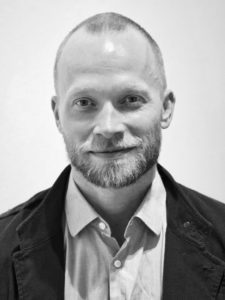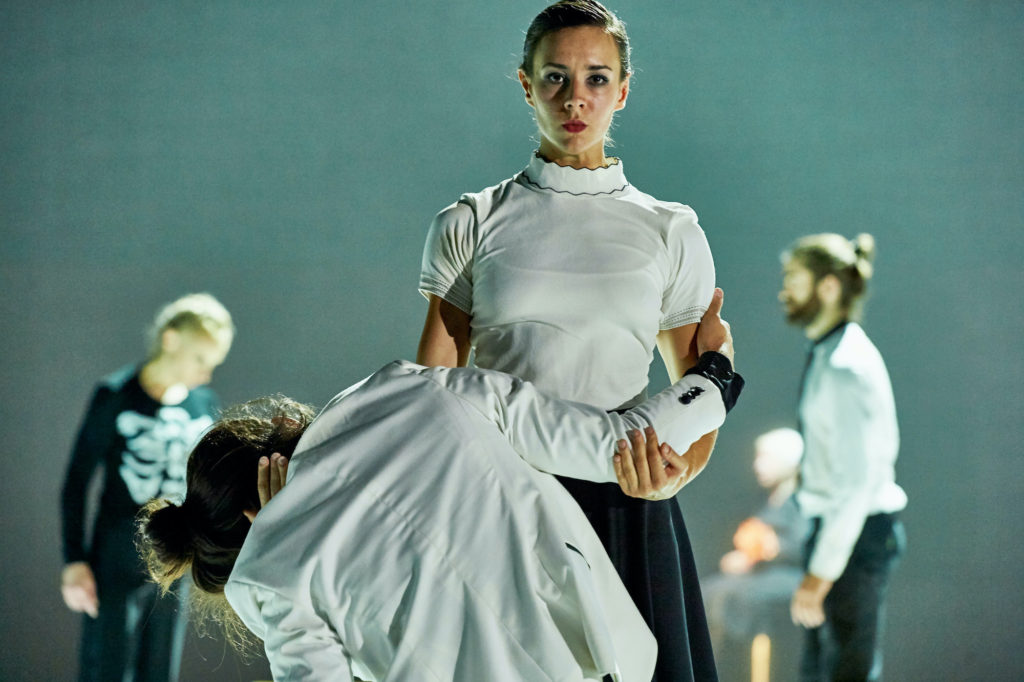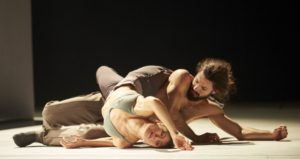Felix Landerer: Making dance from the stories we carry inside - Vancouver Ballet Society
- Home
- Features 2020 - 2023
- Felix Landerer: Making dance from the stories we carry inside

By Veronica Posth
Individuals store a vast range of emotions and potentials within themselves, says German choreographer Felix Landerer, and “the intensity of something unsaid or not expressed can be just as powerful as something that is. I look for this quality in performers and in my work, this sense of urgency which stems from needing to say or not being able to say something.” This human condition is reflected in the sense of gravity, density and tension found in his physical language. Clarity and intention emerge through sturdy physicality, while resistance and resilience shine all over his hefty compositions.

Born in Hanover in 1975, Landerer started dancing at 16 and then moved to Frankfurt, studying at the University of Music and Performing Arts. For eight years, he danced in the ballet ensemble directed by German choreographer Stephan Thoss at the Opera of Hanover. While a full-time dancer, Thoss offered him the opportunity to choreograph two pieces for the ensemble, a process Landerer was strongly attracted to.
In 2006, Landerer founded LANDERER&COMPANY in Hanover, where, alongside his own productions, he began showing his work at Eisfabrik art centre. In 2010, he won first prize at the International Competition for Choreography in Hanover for his duet Suits, an engaging piece built from couple dynamics, and, the same year, the City of Hanover and the State of Lower Saxony began to subsidize his work. Since then, his choreography has been commissioned by a range of companies, including Scapino Ballet Rotterdam (where he was resident choreographer), NW Dance Project in the United States and, in 2019, Nederlands Dans Theater 2, where he made The whys and wherefores are elusive.
Landerer admits to finding great satisfaction in creating movement. His process of creation usually begins by making material that is informed by an idea and his perspective on it; then he looks for references or themes within that material. After many years, this modus operandi has become an almost instinctive procedure.
“It gives me a sense of creative freedom in the beginning of a process, allowing things to emerge naturally out of the movement material itself,” he explains. “Later on it gets more cerebral, once the brain starts searching for dramaturgical clarity and setting everything within a framework. What is beautiful is to observe how informed the material already is, simply because you made it under the influence of a given idea or subject.”

Although Landerer has had “very differing experiences with dance dramaturgy,” he believes dance needs some sort of clarity in decision making, and that it is important to craft a structure that allows the audience to bring themselves into the work, and thus to travel with it. For that to happen, he emphasizes, it is necessary to observe the work from various angles in order to make clear decisions in aesthetics and structure.
“A dramaturg can be someone asking the relevant questions,” he says. “If you develop a very honest and open dialogue, this can greatly enrich many aspects of the work. If [the dramaturg] understands my perspective and taste and can be frank with me, I find [the process] very valuable.”
Landerer says he needs to find a personal point of access to a subject in order to be able to talk about it with his own tools and abilities. There are so many current issues that he feels the necessity to process and “talk about” through choreography. When choosing subject matter, the question if his work with dance is the right medium to tackle it is important; if he thinks the answer is no, he doesn’t pursue it further.
“The actor Willem Dafoe said something in an interview which has stuck with me,” says Landerer. “It was along the lines of ‘art is an offer to get into an exchange with a subject.’ I like that. I would say that the exchange I’m interested in is not so much a mental exchange but something felt.”

Landerer is also spearheading community inclusivity programs in Hanover, opening up his work through professional and non-professional workshops to people from all kinds of backgrounds. These engaging interactions create important bridges of communication between the audience and his company, with many participants continuing to follow their work.
“It is wonderful to see how people react if they’re given the chance to experience authenticity in movement. Sometimes there can be an artificial facade surrounding our work. When you break that down and share experiences with people, there is a lot of undiscovered power in what we do that can be surprising not just to audiences and participants, but also to those of us who work in the field every day.”
During the pandemic, LANDERER&COMPANY has been fortunate with government grants and health regulations, which have allowed dance companies to keep working and creating. CHEER, a piece for ten dancers, premiered on the new online portal of Free Theater Hannover in June 2020. The company will keep showing work online if theatres remain closed, but Landerer strongly hopes to premiere his new creation The Return in front of an audience at the Schauspielhaus Hannover soon.

